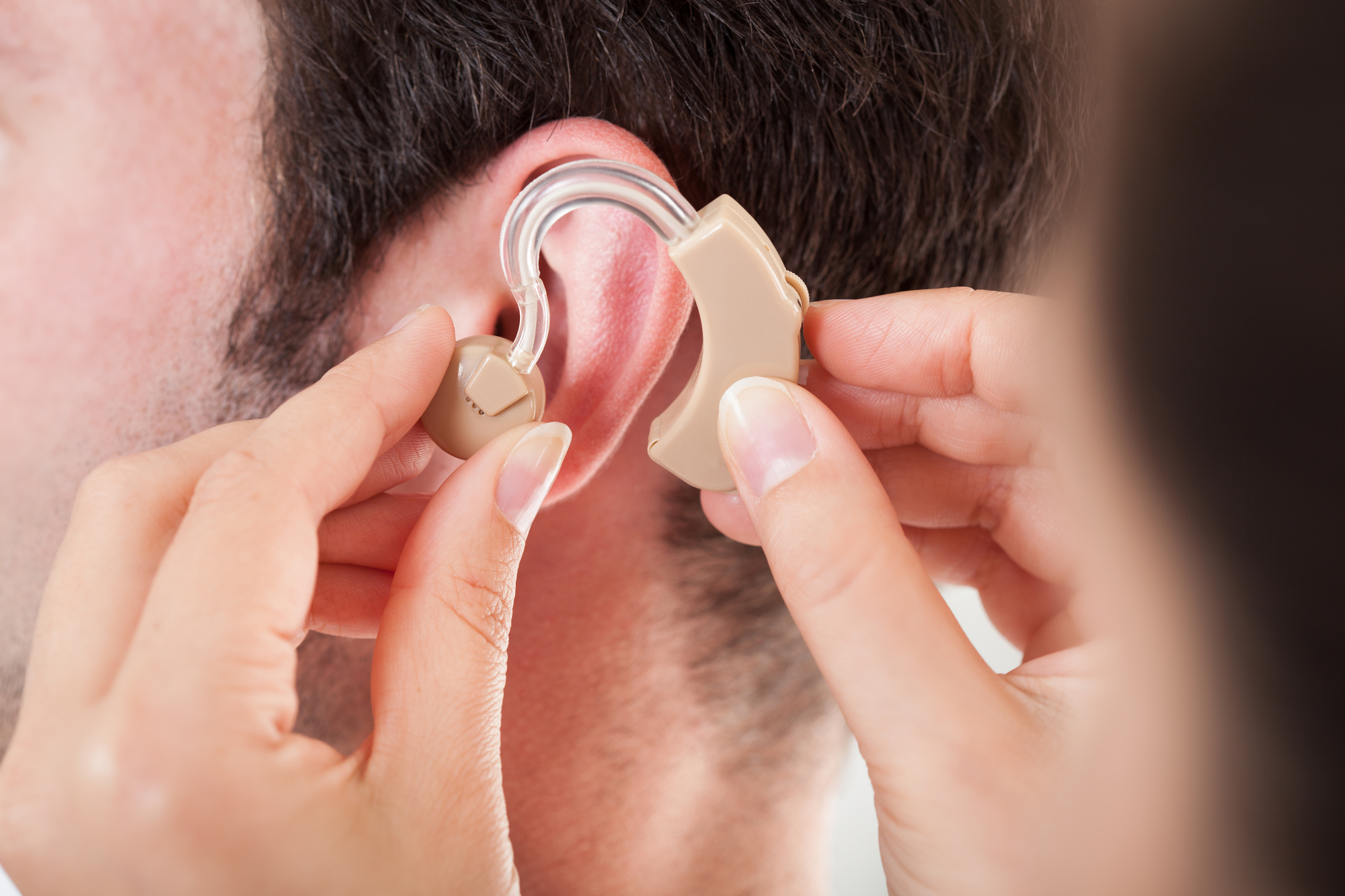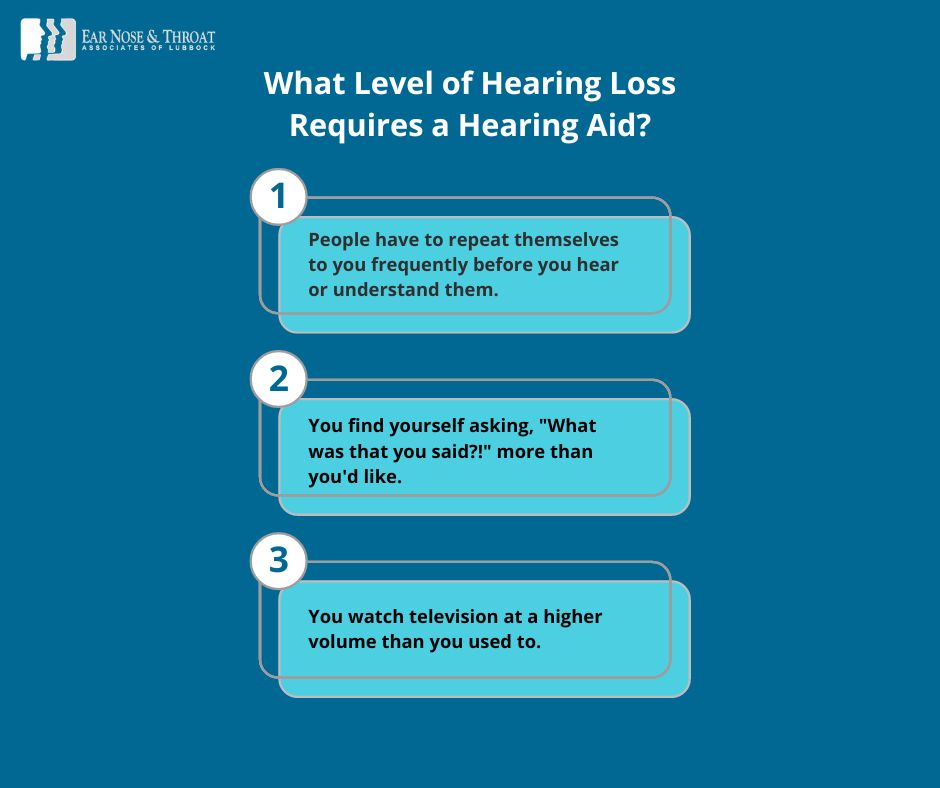What Level of Hearing Loss Requires a Hearing Aid?

Approximately 1 in 8 people in the U.S. aged 12 or older currently has hearing loss in both ears, according to the National Institute on Deafness and Other Communication Disorders (NIDCD).
With hearing loss this common, it’s only natural that many people are curious about it, and may even wonder if they have it.
So how do you know if you have hearing loss? And if you do, what level of hearing loss requires a hearing aid?
A Quick Anatomy of the Ear
Before we talk about various causes of hearing loss, let’s do a quick review of basic ear anatomy. The anatomical ear is much more than just the outer ear that we see attached to the sides of our heads, and learning about the different parts will help us understand hearing loss.
The Outer Ear
The outer ear is made up of the part of your ear that you can see in the mirror, plus the ear canal (the passageway to the middle ear). The ear canal leads to the tympanic membrane, also known as the eardrum, which is a thin barrier between the external ear and the middle ear.
An infection of the outer ear can cause the ear canal to swell shut, leading to temporary hearing loss. In most cases, antibiotic ear drops are enough to cure such an infection. In more extreme cases, oral antibiotics can be helpful.
The Middle Ear
The middle ear is on the other side of the eardrum. It contains three tiny bones called the malleus, incus, and stapes. Healthy middle ears contain air and a small amount of fluid. The eustachian tube, a thin passageway, connects the middle ear to the back of the nose for drainage and air pressure equalization.
A middle ear infection, or otitis media, is extremely common in small children. The eustachian tube doesn’t function as well in young children and can cause fluid, viruses, and bacteria to become trapped in the middle ear.
Most middle ear infections are caused by a virus and resolve on their own after several days. Others are caused by bacteria and may require antibiotics.
Middle ear infections can also cause a temporary reduction in hearing and difficulty understanding people’s words.
The Inner Ear
The inner ear holds the actual organ responsible for your hearing — the cochlea. Although hearing loss can originate in the outer, middle, or inner ear, most permanent hearing loss is related to problems in the inner ear.
Causes and Physiology of Hearing Loss
Within the cochlea, there are very delicate, tiny hair cells that vibrate in response to sound waves. That vibration transmits messages via the auditory nerve to the brain, which interprets these messages as sound.
Prolonged exposure to loud noises, certain medications, and age-related physiological changes can damage these fragile hair cells — and they don’t recover. When these hair cells can no longer vibrate, they no longer transmit sound. This is hearing loss.
Some people are even born with a genetic predisposition to lose their hearing earlier in life than others.
What Level of Hearing Loss Requires a Hearing Aid?
People adjust in different ways to the challenge of hearing loss. Technically, any level of hearing loss can benefit from a hearing aid, but whether or not you should get a hearing aid is a highly individualized decision.
A rule of thumb to keep in mind is that if hearing loss is affecting your day-to-day life, your safety, and/or your ability to communicate with others, you might want to consider getting a hearing aid.

When it reaches 55–60 decibels (dB), hearing loss could cause you to miss out on important parts of conversations. Even smaller hearing losses can have you missing quieter speech or unable to hear an oncoming car.
The level of hearing loss that requires a hearing aid is unique to each person. Consider when hearing loss begins to affect your life noticeably. Some signs to watch for include:
- People have to repeat themselves to you frequently before you hear or understand them.
- You find yourself asking, “What was that you said?!” more than you’d like.
- You watch television at a higher volume than you used to.
When you start to notice such signs, it’s a good idea to start taking steps to evaluate your level of hearing loss and find out what your options are.
Concerned About Hearing Loss? Here Are Your Next Steps
If you’re concerned about your hearing loss, we recommend you start with an ENT exam to make sure there’s not a medical or surgical cause for your hearing loss. If you have temporary hearing loss due to an infection, for instance, a quick course of antibiotics could clear things up — no hearing aids required! And while other causes of hearing loss may not be so simply solved, some surgical procedures can help restore hearing as well.
If your hearing loss stems from damage to the hair cells of your inner ear, your next step will be to visit with an audiologist. An audiologist can test your hearing, help you determine your degree of hearing loss, and, if necessary, fit you for hearing aids that suit your personal and lifestyle needs. An audiologist can also teach you how to care for your hearing aids and can make adjustments to your hearing aids as you learn to live with them.
Dr. Scolaro is a board-certified Otolaryngologist servicing the South Plains area. He has been practicing in Lubbock since 1990 and has earned a reputation as a skilled and experienced surgeon. He currently serves as the Medical Director for Covenant High Plains Surgery Center campuses, is a member of Covenant Health Partners and is an adjunct faculty professor for Texas Tech University Health Sciences Center School of Medicine. Learn more about Dr. Scolaro.
Categories:








